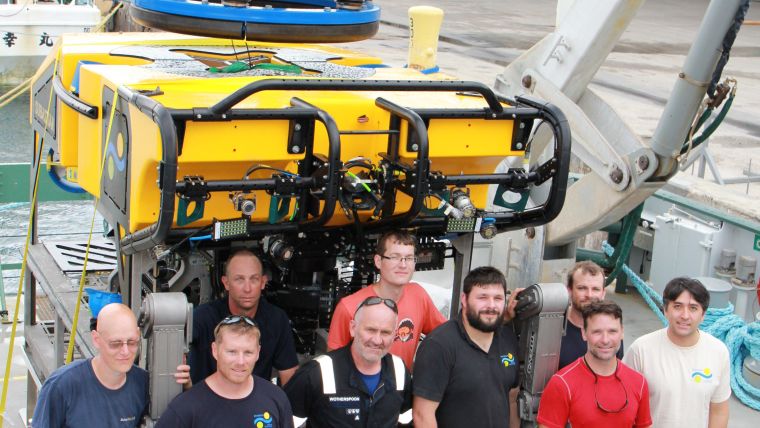New ROV SuBastian Tested in Guam
After a month of completing tests in the open ocean off the island of Guam in the western Pacific, the new remotely operated vehicle (ROV) SuBastian is returning to shore. Schmidt Ocean Institute (SOI) has been working this summer, testing and integrating its ROV from aboard its 272-foot oceanographic research vessel 'Falkor'.
The 25-day testing placed ROV SuBastian in real-world conditions, demonstrating its functionality as a modern research tool with innovative systems. The ROV tests and trials included 22 dives and more than 100 hours underwater. Now that the vehicle has been tested, the team is working on making tweaks and improvements so that SuBastian is ready for its first research cruise later this year, visiting the Mariana Back-Arc in Guam. The 4K high-resolution video footage collected with SuBastian will be openly shared with scientists and interested public around the world.
Mobilisation of ROV SuBastian
Deepest Living Fish Discovery
Wendy Schmidt, co-founder of Schmidt Ocean Institute has watched SuBastian go from concept to a full-functioning vehicle, expressing that with ROV SuBastian, SOI will help make life on the ocean floor real to people who will never visit the sea, so they, too, can begin to appreciate the importance of ocean health and make the connection between life in the deep sea and life on land. Everybody can recognise the importance of the marine environment. She never anticipated discovering the world's deepest living fish, the ghostfish, back in 2014, and she is excited about the life to be discovered next.
ROV for Seafloor Mapping and Imaging
The ROV is connected to an umbilical tether that powers and transfers data for live video telepresence operations, resulting in SuBastian’s ability to potentially stay submerged and explore for multiple days at a time. This is the first submersible vehicle that SOI, founded by Eric and Wendy Schmidt, has designed and built. ROV SuBastian was built to meet the needs of scientists aboard Falkor, while considering the well-being of the entire marine environment. The ROV is designed to go to depths of 4,500 metres and will be suitable to support high resolution seafloor mapping, photomosaicing, video and image gathering; and collections of rocks, animals, and seawater samples. SuBastian is equipped with a versatile array of power and data interfaces to enable integration of a wide range of add-on deep sea instruments and samplers that oceanographers may need to support their deep sea research.
Schmidt Ocean Institute provides collaborating researchers and scientist’s free access to research vessel Falkor, as well as expert technical support in exchange for a commitment to openly share and communicate the outcomes of research, including the raw observations and data. With many ROV research cruises foreseen through at least 2018, there certainly will be lots to learn with SuBastian.

Value staying current with hydrography?
Stay on the map with our expertly curated newsletters.
We provide educational insights, industry updates, and inspiring stories from the world of hydrography to help you learn, grow, and navigate your field with confidence. Don't miss out - subscribe today and ensure you're always informed, educated, and inspired by the latest in hydrographic technology and research.
Choose your newsletter(s)
























